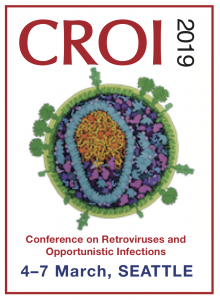Double doses of darunavir given with rifampicin lead to high rates of hepatoxicity
12 March 2019. Related: Conference reports, PK and drug interactions, TB coinfection, CROI 26 (Retrovirus) 2019.
Adjusted doses of darunavir/ritonavir (DRV/r) with rifampicin (RIF) were associated with unacceptable risk of hepatotoxicity and a reduction in DRV trough concentrations in a pharmacokinetic (PK) study, conducted in South Africa, presented at CROI 2019.
DRV/r is better tolerated and has a higher genetic barrier to resistance than lopinavir/ritonavir (LPV/r) – which is part of standard second-line ART in most low- and middle-income counties (LMICs). Doubling LPV/r leads to therapeutic concentrations when administered with RIF.
Currently, giving DRV/r with RIF is contraindicated as significant reductions in DRV exposures are expected. Switching RIF to rifabutin is recommended but this drug is not available in most LMICs. Not being able to give DRV/r with standard first-line TB treatment is a barrier to its use in such settings.
Investigators from the University of Cape Town performed a study to compare the trough plasma concentrations for double doses of DRV/r given once or twice daily with rifampicin versus standard dose DRV/r without rifampicin. Gary Maartens presented the results on behalf of the study team.
It was an open label, randomised, cross-over, single centre, PK drug interaction study, including HIV positive participants with viral load <50 copies/mL and CD4 >200 copies/mm3, receiving second-line ART of ritonavir (RTV)-boosted PI + 2NRTIs.
In place of their boosted PI participants received two adjusted doses of DRV/r (1600/200 mg once daily and 800/100 mg twice daily) with RIF to compare with plasma exposures with DRV/r 800/100 mg once daily without RIF.
Baseline DRV steady state PK was measured and RIF added for 7 days, then the dose of RTV was increased to 200 mg; 7 days later the dose of DRV was increased; after a further 7 days, participants crossed over to the alternative adjusted DRV/r dose. PK in plasma samples was measured at baseline post-dose and after each dose adjustment.
The study was originally planned to enrol 28 participants in two sequential cohorts of 5, 12 and 11 participants, with a DSMC review after each cohort. Stopping rules included DAIDS grade 3/4 events in two or more of the first five participants or >20% of the following cohorts.
The study was stopped before completion due to high rates of hepatotoxicity.
At baseline participants in cohorts 1 and 2 (n=16) were: 15/16 women; median age 44 years; weight 73 kg; BMI 31 kg/m2; CD4 684 cells/mm3; and median of second-line ART 58 months.
Six (35%) participants were withdrawn for grade 3 (n=3) or 4 (n=3) ALT elevations developing after 9–12 days of RIF. All participants with grade 3/4 ALT were symptomatic.
All case of hepatotoxicity resolved after withdrawal of study treatment and participants successfully returned to their standard of care ART regimen.
DRV trough concentrations were below the protein-adjusted EC50 of 200 ng/mL in 2/4 participants in the once-daily double dose group on RIF (0/4 in the twice daily group).
The investigators concluded that double dose DRV/r with RIF has an unacceptable risk of hepatotoxicity in HIV positive people without TB.
Twice daily but not once daily double dose DRV/r might achieve adequate DRV trough concentrations.
comment
Giving RIF with PIs remains complicated.
Reference
Ebrahim I et al. Pharmacokinetics and safety of adjusted darunavir/ritonavir with rifampin in PLWH. CROI 2019. Seattle. 4–7 March 2019. Oral abstract 81LB.
http://www.croiconference.org/sessions/pharmacokinetics-and-safety-adjusted-darunavirritonavir-rifampin-plwh (abstract)

 Polly Clayden, HIV i-Base
Polly Clayden, HIV i-Base